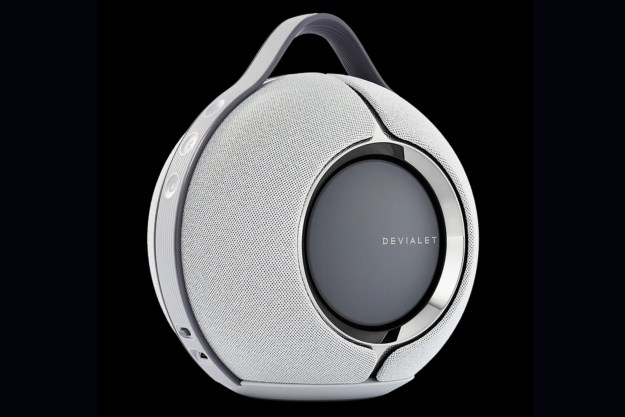In many ways, Sonos is a lot like Apple: Its platform may be a walled garden for wireless music systems, but it is extremely approachable and exceptionally easy to use. The speakers carry the sort of cachet often associated with Apple products thanks to clean designs, simple interfaces, and best-in-class packaging. In short, Sonos stuff “just works,” and that’s all most people need before they pull out their wallets and start throwing down cash. Except
The Play:5 is a direct descendant of the speaker that started it all for Sonos, the S5, and a natural evolution of the Play: series line-up, following the the Play:1 (good) and Play:3 (better) as the best — and biggest — stand-alone speaker
This isn’t just Sonos’ biggest speaker; the Play:5 is also its most versatile. The speaker can be oriented either horizontally for placement on a shelf or desk, or vertically, which would make more sense if two Play:5 speakers were paired for a more conventional stereo or surround sound setup. Of course, it could be argued that the Play:5 is a bit overkill as a surround speaker, but as with the Play:1 and Play:3, the Play:5 can be paired with the
We’ve come to expect great sound from Sonos speakers, but we can honestly say the Play:5 exceeded our expectations. Having just evaluated the $700 Bowers & Wilkins Zeppelin Wireless, the bar was already set fairly high, but the Play:5 came right in and dominated the room. Bass is robust and tightly controlled (if not quite as deep as the Zeppelin Wireless), with a punch that you can feel. The midrange is silky smooth, with natural rendering of vocals and string-based instrumentation, while the treble adds texture, grit, and shiny overtones to a generally well-balanced whole. More simply put: The Play:5 is powerful and potent while remaining well-controlled and reserved enough to handle nearly any type of music with respect.
Add superior sound quality to Sonos’ best-in-class wireless audio experience, and you get the wireless speaker to beat. The Play:5 will be hanging around our testing room for quite some time, because any other wireless speaker that dares ask $400 or more will have to measure up. Something tells us, though, that
Editors' Recommendations
- Sonos app gets a major overhaul as the company prepares for next-gen products
- Tivoli Audio’s Model Two Digital speaker abandons terrestrial radio
- Android users are about to lose a handy Sonos feature
- Bluetooth on Sonos’ new Era speakers isn’t what you think – it’s better
- Sonos’ new Era 100 and Era 300 wireless speakers go all-in on spatial audio and Bluetooth





